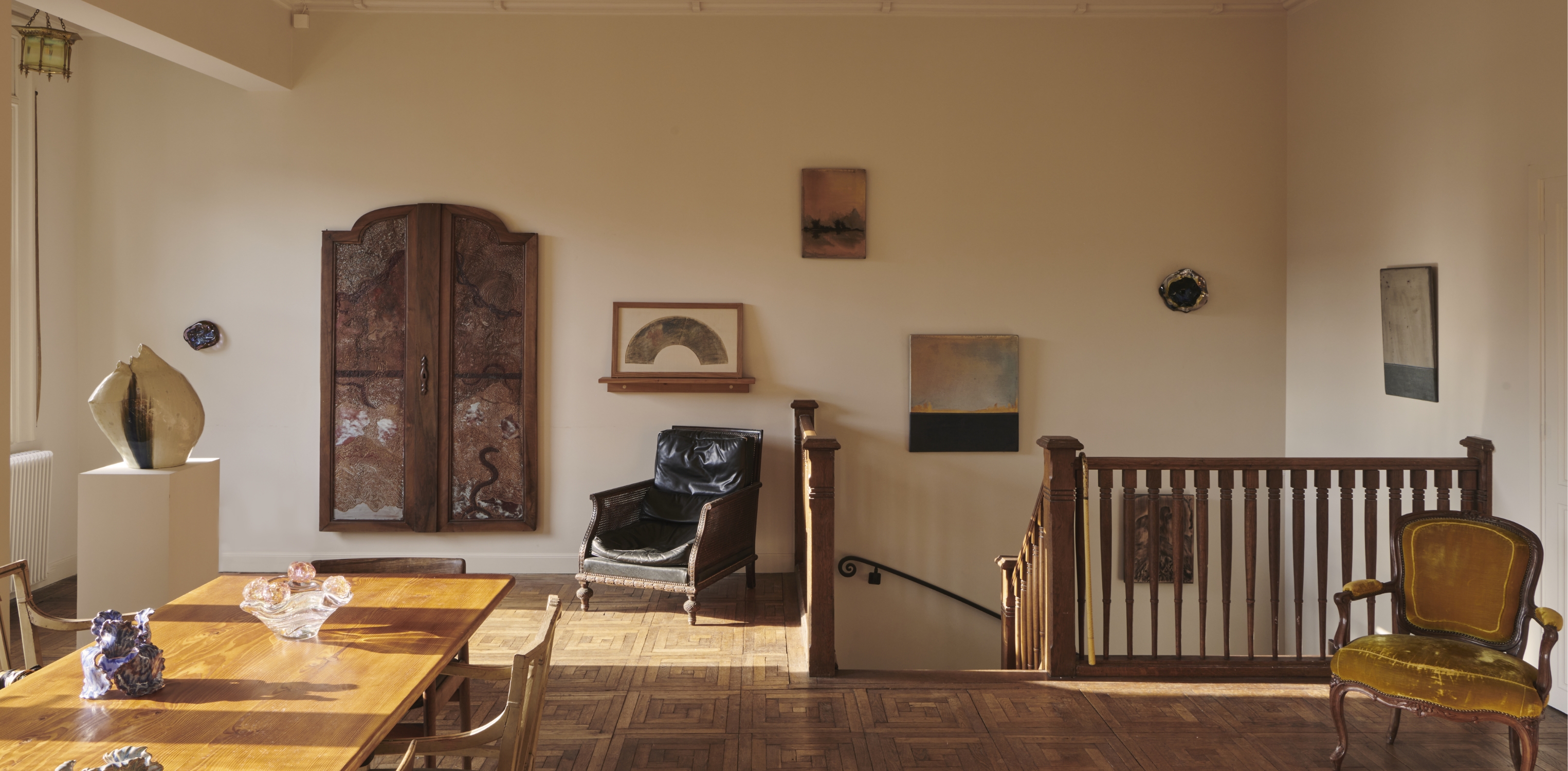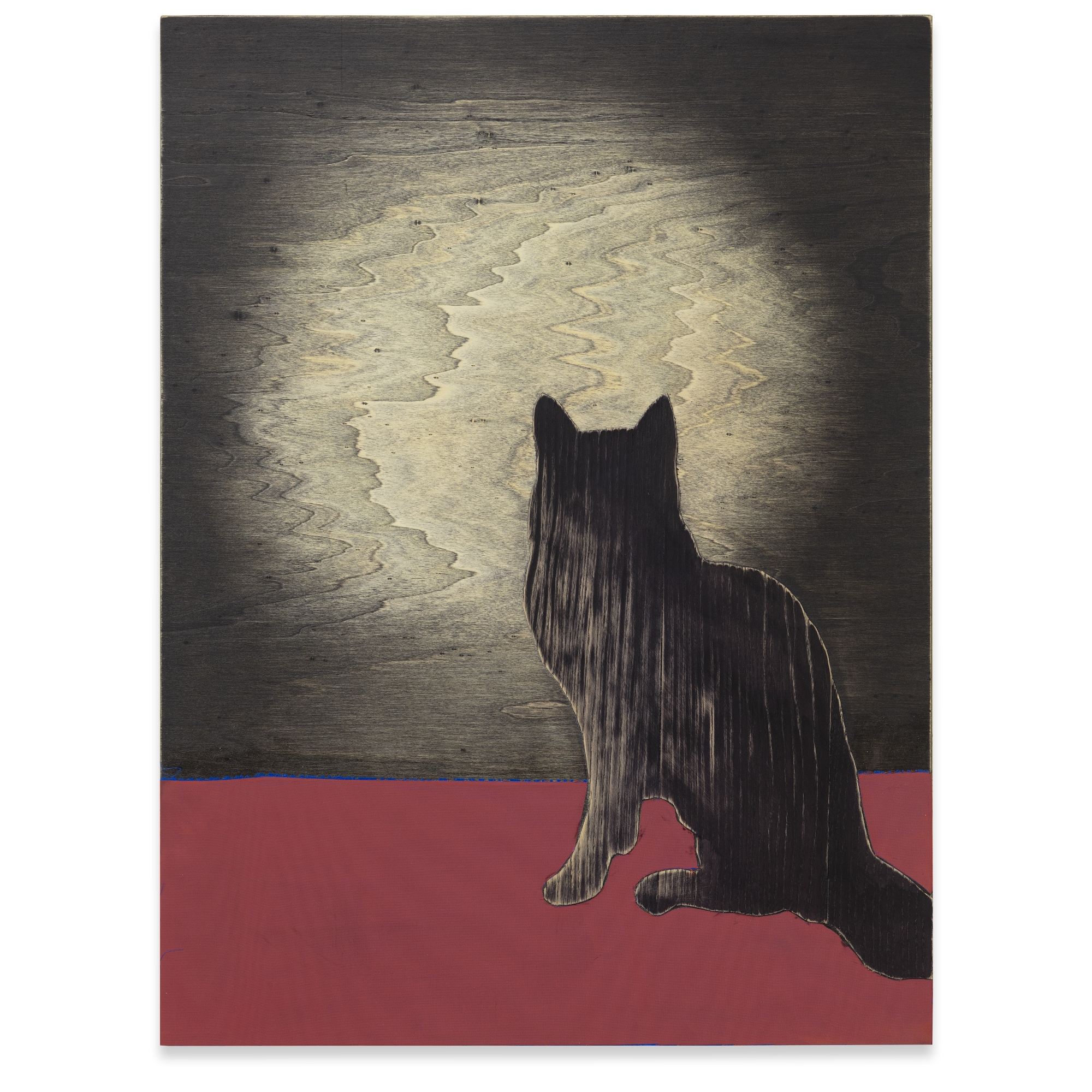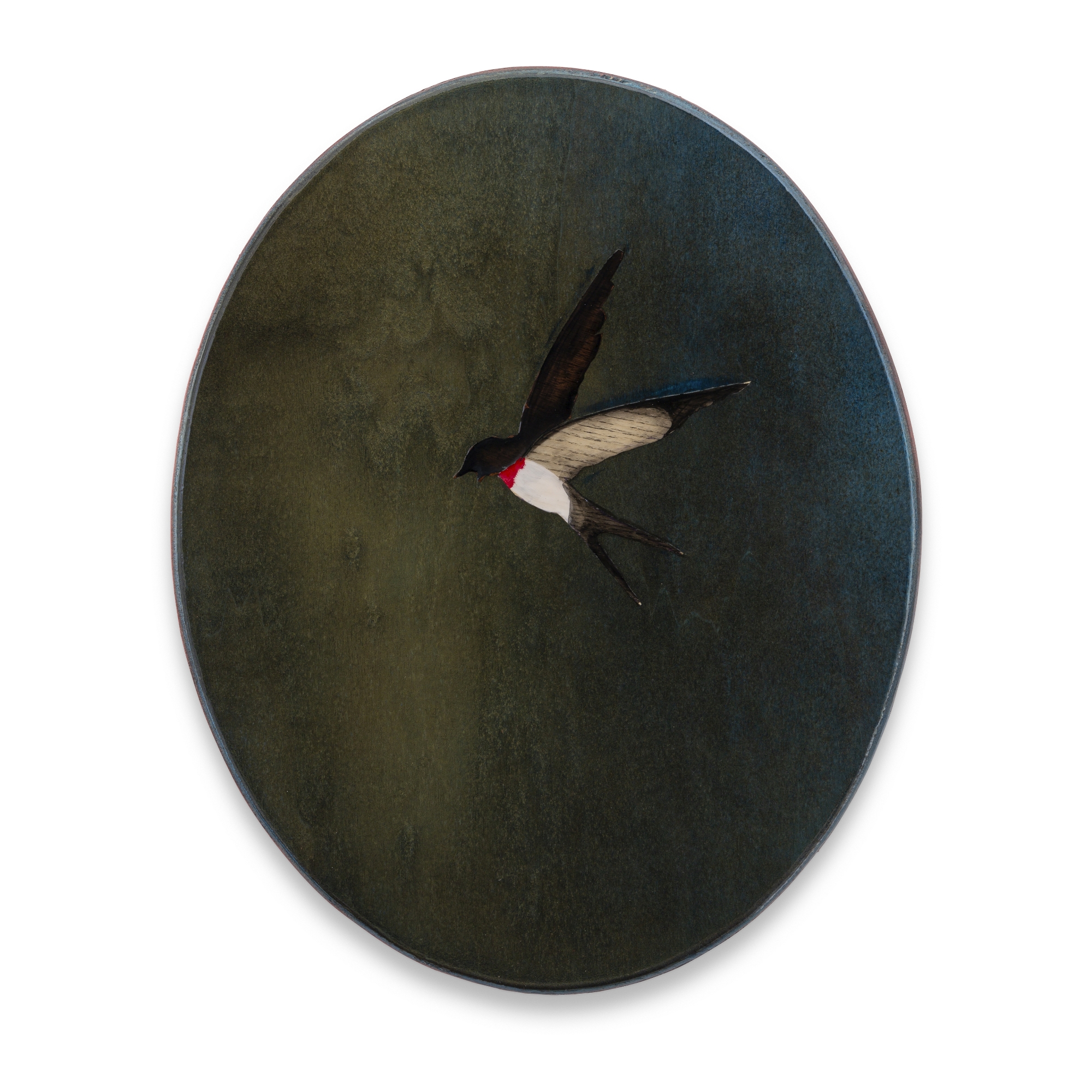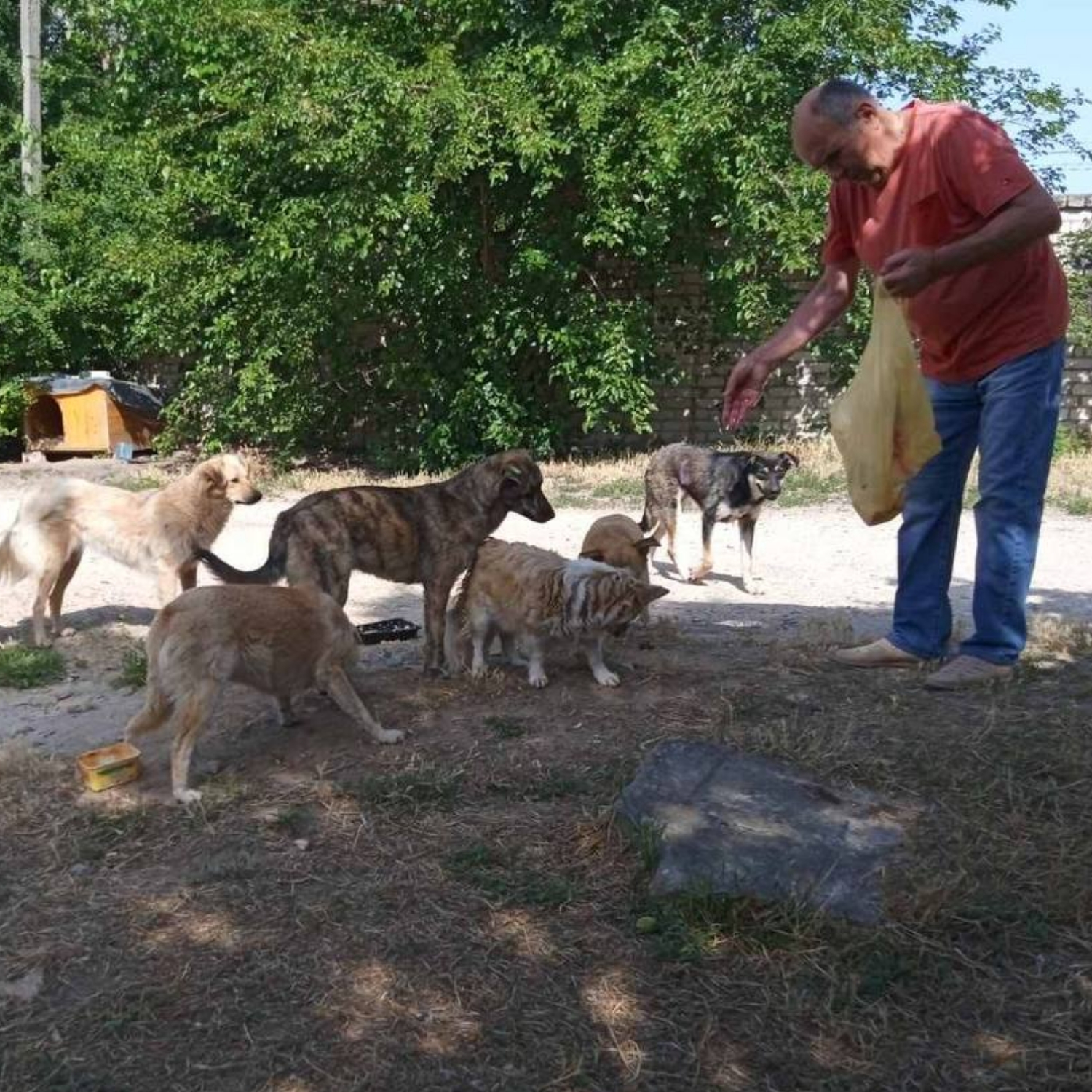INTERVIEW WITH
STÉPHANIE RUTH

Photo: Maxime Leyvastre
INTERVIEW WITH
STÉPHANIE RUTH
February 2025
Just between producing our DON’T LOOK BACK EDITION in August and launching it in December 2024, art historian and interior designer Stéphanie Ruth curated a remarkable group show in Paris. Located inside the apartment of Brunhilde Bordeaux-Groult and Robert Elfgen, the exhibition naturally featured their works — among 13 other artists such as Max Ernst and Rosemarie Trockel.
Getting to talk to Stéphanie was a special chance — not only for understanding her curatorial approach "creating art experiences that engage the senses and challenge conventional ways of viewing“ but also for gaining private insights into the inward-facing narratives and implications of Robert’s artistry in particular.
Our thanks go to Stéphanie for her time and for making available some wonderful installation views from the said exhibition. Our special thanks go to the gallery Sprüth Magers for providing photographs of some of Robert Elfgen’s individual art pieces for this interview.
VICTOR HELLER: You have a background in art history and interior design.
Can you tell us about it and in how far you combine these two fields with each other?
STÉPHANIE RUTH: I see art and design as two languages that complement
each other; my curatorial work often draws on the interplay of storytelling through objects and artworks within carefully considered spaces. Together, they create immersive narratives that elevate both the visual and emotional experience of an exhibition.
VH: Just recently, you curated a group show in Paris. Located inside the Art Deco apartment of Brunhilde Bordeaux-Groult and Robert Elfgen, the exhibition featured 44 works by 15 artists with fairly different profiles. How do you approach such projects? What were you specifically looking for in the participating artists?
SR: Curating in a lived-in space demands a delicate balance between
respecting the architecture and creating unexpected dialogues between the artworks and their surroundings. For this project, I sought artists whose works had a sense of tactility and intimacy, and that mirrored the personal essence of the apartment while introducing fresh, dynamic perspectives.

Photo: Fannie Plessis
VH: Robert Elfgen’s work was a prominent part of this show as well. What do you think about when engaging with his art by itself? And in which ways did it interact with the exhibition space?
SR: Elfgen’s works feel like portals to another world—they’re poetic and layered
with material experimentation. In the apartment he shares with Brunhilde, his
artworks almost felt like relics of a dreamscape that extended the nostalgic yet
contemporary energy of the space.
VH: There is a quote by Robert in which he states: “I actually work like a sculptor.
For my paintings, I use solid materials like wood or brass that I can stain, saw off, and shape.“ How do Robert’s paintings — or ‘sculptures’ — and his way of creating give him a unique position?
SR: His hybrid process challenges traditional boundaries of painting and
sculpture, turning each artwork into a multidimensional object that invites
close inspection. This tactile sensibility creates an emotional bridge between
the viewer and the work.

© Robert Elfgen: Laura, 2023. Courtesy the artist and Sprüth Magers. Photo: Ingo Kniest
VH: Recurring motifs such as birds, swifts, owls, foxes, eagles, cats, rabbits, and others form a ‘cosmos animal’ that is very specific to Robert’s artistry. They occur in familiar ways but also in miraculous, switched nuances, for instance, with tears in their eyes. What might they signify in the context of mythological, historical, or personal themes?
SR: These motifs evoke a sense of timelessness, connecting us to ancient
myths while addressing universal emotions like loss, longing, and
transformation.
VH: Is there something in Robert’s art that you carry into your personal
life? An idea, an approach, … a smile?
SR: His ability to transform everyday materials into a sense of wonder can
inspire us to pay attention to the small, seemingly mundane things in life—a
reminder to find beauty and potential in the unexpected.
VH: Merci beaucoup.

© Robert Elfgen: bon voyage, 2024. Courtesy the artist and Sprüth Magers. Photo: Jochen Arentzen

© Robert Elfgen: Elpis, 2020. Courtesy the artist and Sprüth Magers.

© Robert Elfgen: On the Carpet, 2014. Courtesy the artist and Sprüth Magers. Photo: Timo Ohler

© Robert Elfgen: bon voyage I, 2024. Courtesy the artist and Sprüth Magers. Photo: Jochen Arentzen
RELATED

Donation Report
JUL 2024

Interview with Yvonne Quirmbach
DEC 2023
SIGN UP!
Be the first to receive news on upcoming editions, events and more.






